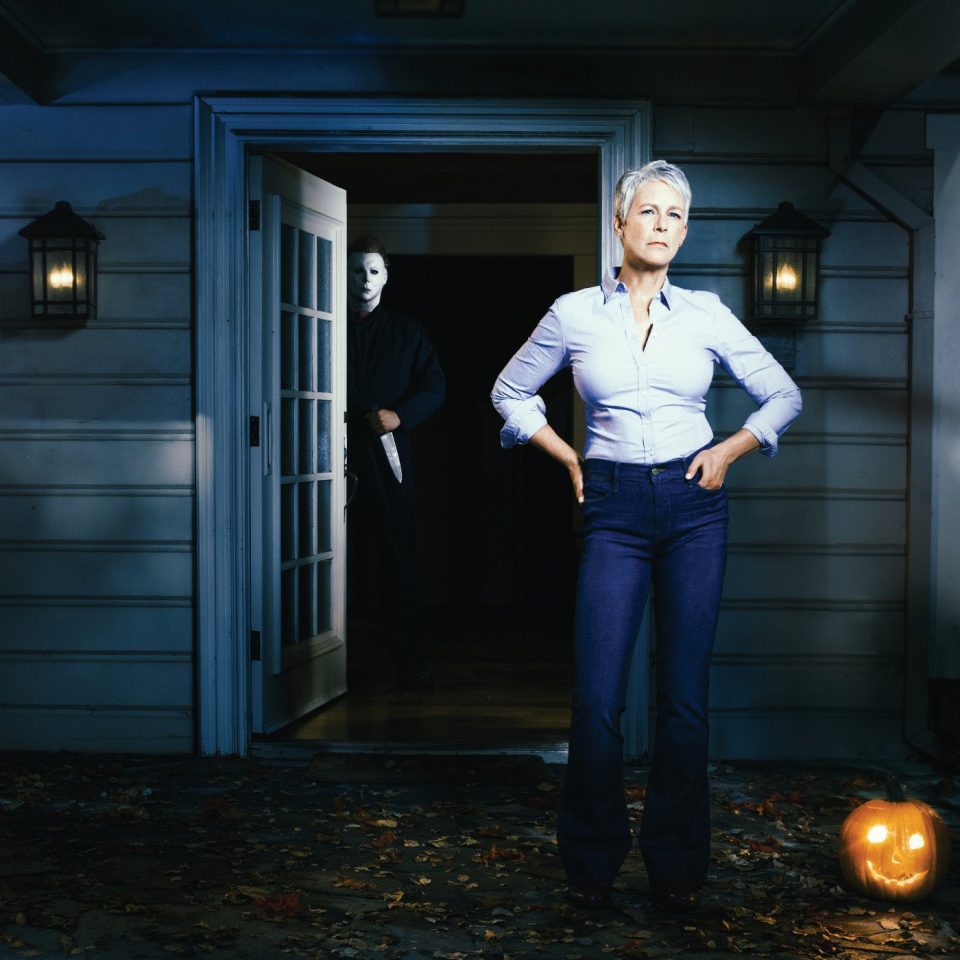‘Halloween’ Review: A Slasher-Movie Reboot for the #MeToo Era
Jamie Lee Curtis and director David Gordon Green gives us the one true sequel to the gamechanging 1978 original
★★★★
Want to scream bloody murder? Then the new Halloween is the trick-or-treat frightfest for you. But, first, a leap of faith is required. You have to forget that there are already nine sequels and remakes of John Carpenter’s 1978 original ”” thankfully, director David Gordon Green and coscreenwriters Danny McBride and Jeff Fradley pretend those lame copies never existed (no loss there). To them, Halloween 2018 is the first sequel ever to Carpenter’s horror classic. It’s been 40 years since babysitter Laurie Strode (Jamie Lee Curtis) got rocked by PTSD when the masked killer Michael Myers rampaged through the leafy streets of her hometown of Haddonfield, Illinois. And in the years since, the Final Girl has turned herself into Bloody Grandma, a rabid survivalist who’s booby-trapped her house and stayed rifle-ready until the day Michael ”” the essence of pure evil ”” breaks out of his loonybin and comes for her. That day is here. And, yup, it’s Halloween.
Just watching Curtis dig into the role of this former-babysitter-turned-hardcore-avenger will keep you on the edge of your seat. She’s a marvel of ferocity and feeling. Laurie knows that her Michael obsession has lost her custody of her now-adult daughter Karen (Judy Greer), trained in combat since childhood, and caused a rift with her granddaughter Allyson (Andi Matichak). But she’ll live with it if her family can be safe. Playing the naïve Laurie made Curtis a star at 19; now she brings a sense of loss, regret and separation to the role that deepens the character’s humanity without diminishing her resolve. It’s a savage roar of a performance that stays alert to nuance. And it fits in perfectly with Green’s concept of the film as a feminist parable in which three women come together to call #TimesUp on a male predator.
In other areas, the filmmaker must fight familiarity in a sometimes losing battle. Though he ups the violence quotient on Carpenter’s film, Green’s R-rated sequel comes after the torture-porn excess of the Saw and Hostel franchises that numbed us to gore. It also lacks the satiric bite of Get Out. This is a film made by Carpenter fans for other Carpenter fans. Green brought on the master, now 70, as advisor and to update his eerie synthesizer score with son Cody Carpenter and Daniel Davies. The credits ape the original’s right down to the serif font, and cinematographer Michael Simmonds indulges in those long, suspenseful tracking shots that take Myers’ point of view. The first actor to play the horror-flick icon, Nick Castle, joins forces with James Jude Courtney, to embody the older but still death-fixated man-in-the-mask. And yes, that William Shatner/Star Trek mask painted white is very much present and accounted for.
So what’s new? Not much according to the plot, which more or less follows the same trajectory as the original. The first Halloween”˜s Dr. Loomis, played by the late Donald Pleasance, has been replaced by the equally obsessive Dr. Sartain (Haluk Bilginer). The shrink wants to know why Michael kills. For a with-it touch, two Brit podcasters (Rhian Rees and Jefferson Hall) have been added to the equation to retell the homicidal maniac’s story for the uninitiated. They are also around to provide fresh meat before Michael goes into slaughter mode on the babysitter beat.
All things end, as they must, with the Strode women taking on Michael in the woods. Halloween started as a slasher movie done with an inventive talent for the game by Carpenter. That Green’s sequel works as well as it does ”” it’s still a slasher movie ”” is due only in part to the director and his collaborators’ copycat admiration for Carpenter’s blueprint. Mostly it’s the troubled times we live in that allows this energizing, elemental horror film to touch a raw nerve for #MeToo. We watch a woman call a male monster to account for her own lasting trauma. That’s too real to laugh off as Hollywood make-believe. We’re living it.








